If you’ve been dreaming of a well-behaved dog but don’t want to break the bank on fancy training equipment, you’re in the right place. DIY dog training tools are not just budget-friendly—they’re incredibly effective. With the right approach and homemade gear, you can reinforce positive behavior, strengthen your bond, and train your pup right at home.
Table of Contents
- Why Go DIY? The Benefits of Homemade Dog Training Tools
- Essential Rules for Effective Dog Training
- DIY Clicker for Positive Reinforcement
- Homemade Treat Dispenser for Reward-Based Training
- How to Create a Simple Agility Course at Home
- DIY Leash and Harness Enhancements for Better Walks
- Interactive Toys to Keep Your Dog Engaged
- Calming Tools for Anxiety-Prone Dogs
- Tools for Correcting Unwanted Behavior
- Maintenance and Cleaning of Your DIY Tools
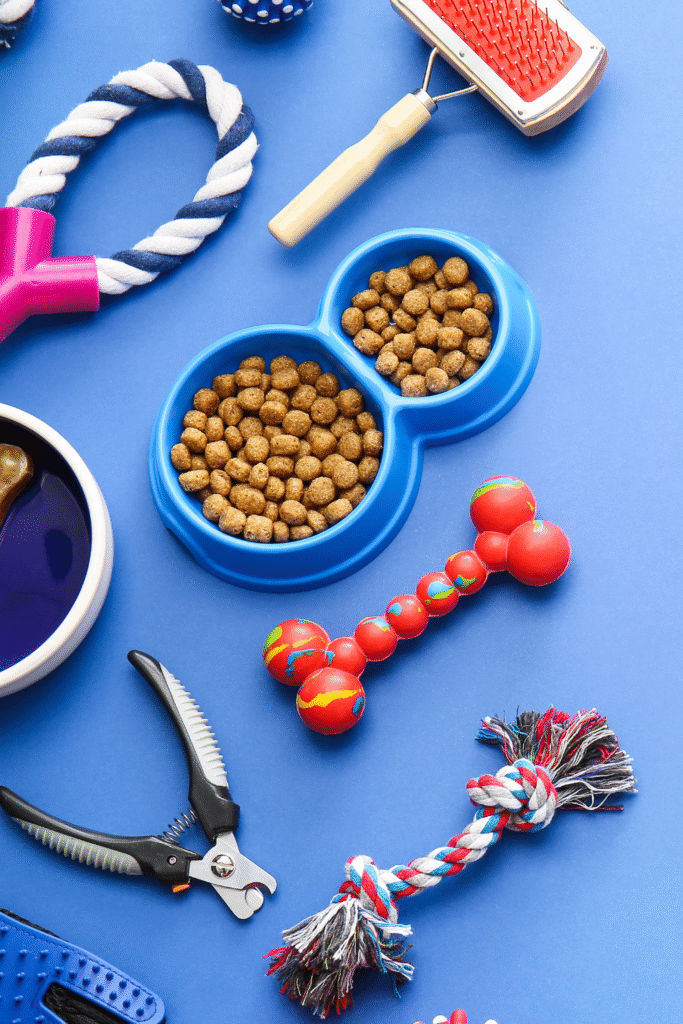
Why Go DIY? The Benefits of Homemade Dog Training Tools
Training your dog doesn’t have to mean spending a fortune. DIY dog training tools are inexpensive to create, and they’re every bit as effective as store-bought alternatives. Here are some of the key benefits:
- Cost-Effective Solutions
DIY tools are crafted from items you may already have at home, saving you money. For instance, an old tennis ball can be repurposed into an interactive toy.
- Customization for Your Dog’s Needs
Each dog has unique preferences and training requirements. DIY tools can be tailored to fit your dog’s size, strength, and personality.
- Eco-Friendly Approach
Repurposing old items reduces waste and helps the environment. Plus, you can reinforce sustainability while training your furry friend.
- Bonding Experience
Crafting these tools and using them together enhances trust and communication between you and your pup.
- Practicality and Convenience
Instead of waiting for a shipment or running to the store, you can make a training tool in just minutes. With simple items like bottles, cords, or cloth, you’re always ready to train.
Training goes beyond tools—it’s about the strategies you apply in conjunction with these homemade aids. Next, you’ll discover essential training rules before jumping into DIY projects.
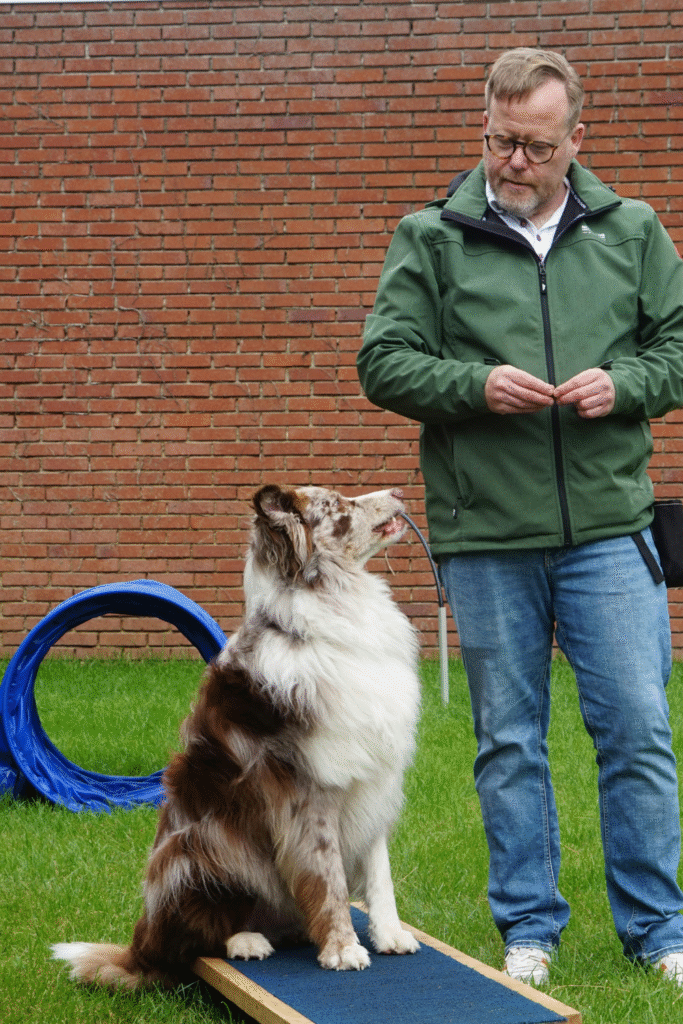
Essential Rules for Effective Dog Training
Before jumping into crafting your tools, it’s important to understand the principles of effective dog training. These rules will make your sessions productive and enjoyable.
- Consistent Commands
Use words like “sit,” “stay,” or “heel” consistently. Mixing up commands confuses dogs and slows progress.
- Short Sessions
Keep training sessions between 5-15 minutes. Dogs, especially puppies, have short attention spans.
- Reward Immediately
Reinforce desired behavior with a treat, praise, or a click immediately after it happens. Timing is everything.
- Be Patient
Some dogs learn quickly, while others take time. Your persistence will pay off.
- Eliminate Distractions
Train in a quiet space initially, then gradually introduce distractions once your dog has mastered the basics.
- Focus on Positive Reinforcement
Dogs respond better to rewards than punishment. Highlight what they’re doing right instead of focusing on mistakes.
- Observe Your Dog’s Signals
Pay attention to your dog’s body language—it will help you understand their comfort level and focus.
With these guidelines in mind, you’re ready to craft tools that fit seamlessly into your training regimen.
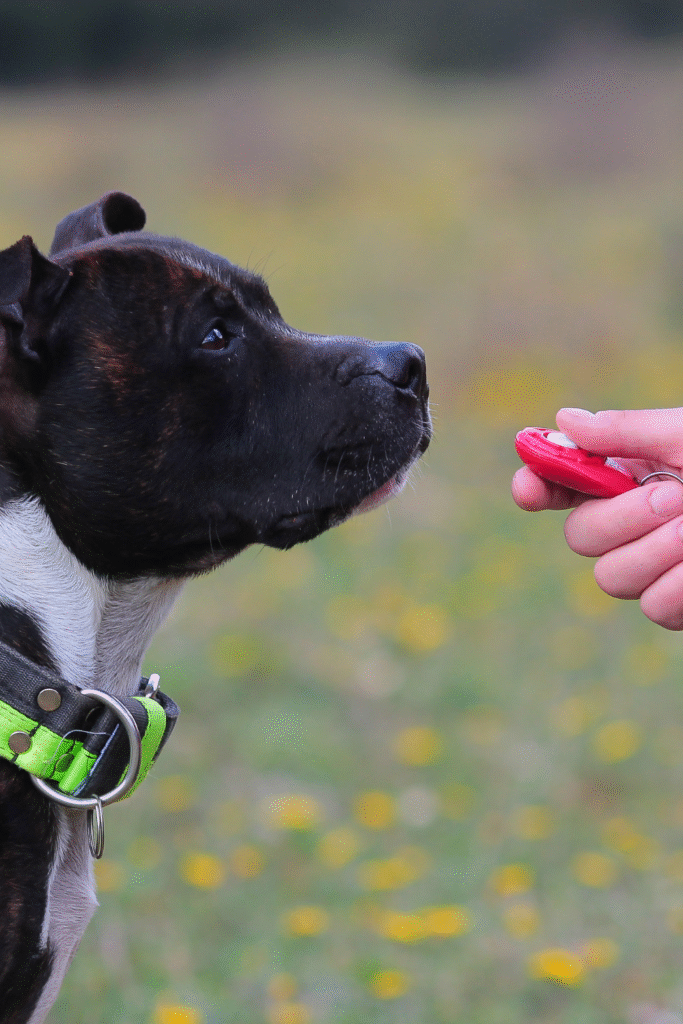
DIY Clicker for Positive Reinforcement
Clicker training simplifies communication with your dog by associating the sound of a click with positive reinforcement. Why buy one when you can easily make one at home?
Materials Needed
- A metal jar lid or bottle cap
- A sturdy plastic strip (a section of an old gift card works well)
- Strong tape
How to Make It:
- Cut a strip from the plastic card that’s about 3 inches long.
- Secure the strip to the jar lid using strong tape, leaving enough flexibility so it bends back when pressed.
- Test your clicker to ensure the desired sound is produced!
How to Use It:
- Step 1: Say a command (e.g., “Sit”).
- Step 2: When the dog follows the command, immediately press the clicker to make a sound.
- Step 3: Reward your dog with a treat right after clicking.
This tool is simple to use and reinforces commands effectively without the need for verbal praise every time.
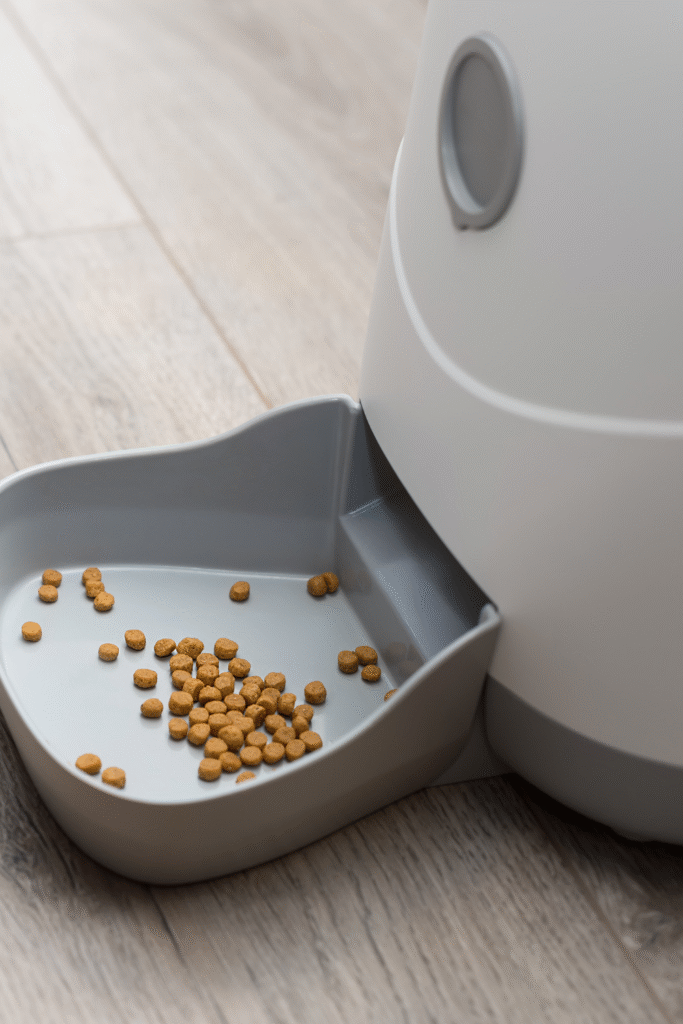
Homemade Treat Dispenser for Reward-Based Training
A treat dispenser doubles as a training tool and an interactive toy that keeps your dog mentally engaged.
Materials Needed
- An empty plastic bottle
- A craft knife or scissors
- Dry dog treats
How to Create It:
- Wash and dry the plastic bottle to remove any labeling residue.
- Cut small holes into the sides—just big enough for a treat to fall through.
- Add dry treats, tighten the lid, and watch your dog interact with it!
This tool is particularly effective for dogs that benefit from activity-based rewards.
Example Table of DIY Tools and Purpose
| DIY Tool | Purpose | Materials Needed |
|---|---|---|
| Plastic Bottle Treat Dispenser | Provides mental stimulation and rewards for dogs | Plastic bottle, craft knife, dry dog treats |
| T-Shirt Tug Toy | Encourages interactive play and physical activity | Old t-shirt, scissors |
| Snuffle Mat | Promotes foraging instincts and mental engagement | Felt fabric, non-slip mat |
| Cardboard Box Puzzle | Enhances mental stimulation and problem-solving | Cardboard box, dog treats |
| Tennis Ball Treat Holder | Combination of active play and rewarding treats | Tennis ball, knife, treats |
This table provides an easy way to identify tools, materials, and their purposes, tailored to different dog needs.
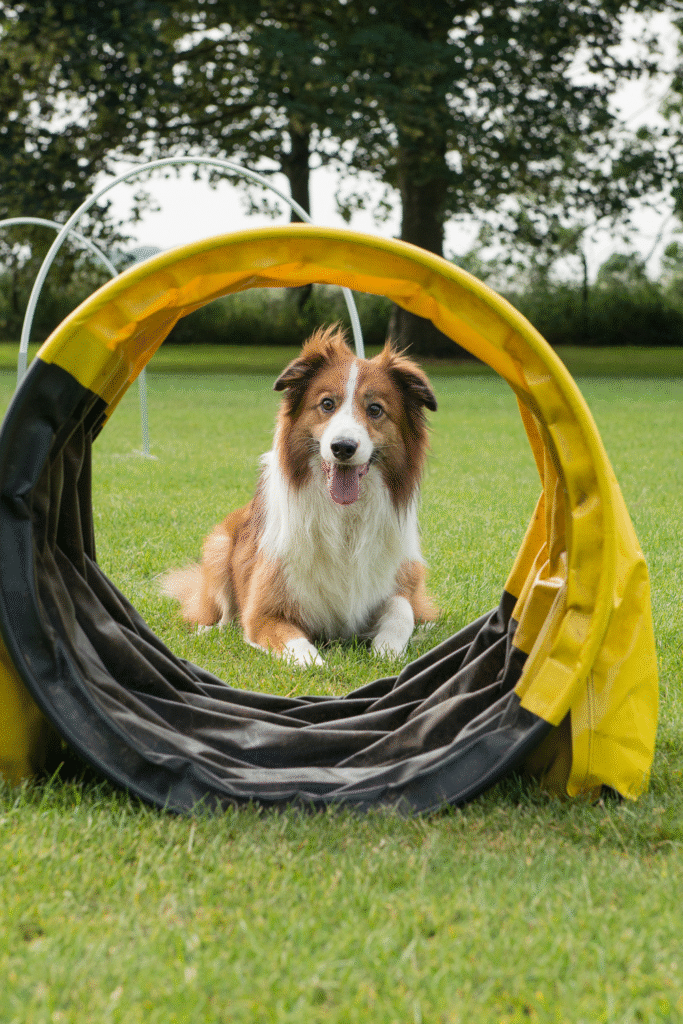
How to Create a Simple Agility Course at Home
Creating a DIY agility course at home is both fun and rewarding for you and your dog. It’s an excellent way to enhance their physical fitness, coordination, and obedience. Here’s how you can set up a simple course using everyday items:
- Plan Your Space
Choose an open area, like a backyard or a spacious room, where your dog can move freely without obstacles. Make sure the ground is safe and non-slippery to prevent injuries.
- Construct Jumps
Use PVC pipes, broomsticks, or even pool noodles to create hurdles. Prop them up using sturdy objects like stacked books or chairs. Adjust the height according to your dog’s size and ability.
- Weave Poles
Line up household items such as traffic cones, water bottles, or sticks to create a weaving path. Space them evenly and wide enough for your dog to move comfortably.
- Tunnel
Use a collapsible play tunnel or a large cardboard box with both ends open. If these aren’t available, drape a blanket over a row of chairs to simulate a tunnel.
- Pause Box or Platform
Create a “pause” station using a piece of plywood or a sturdy box. This area will teach your dog to wait calmly and can serve as a good obedience test.
- A-Frame Ramp
Use wooden planks to form a ramp or incline. Secure them firmly to avoid slipping and ensure the surface isn’t too steep or slippery.
- Design a Course Sequence
Arrange the obstacles with a clear path in mind. Incorporate variety to keep your dog engaged and excited.
- Start Training Gradually
Begin by introducing each obstacle one at a time. Use treats and verbal encouragement as positive reinforcement to help your dog learn and enjoy the activity.
With these simple steps, you and your dog can enjoy a fun, stimulating agility course without much cost or fancy equipment!
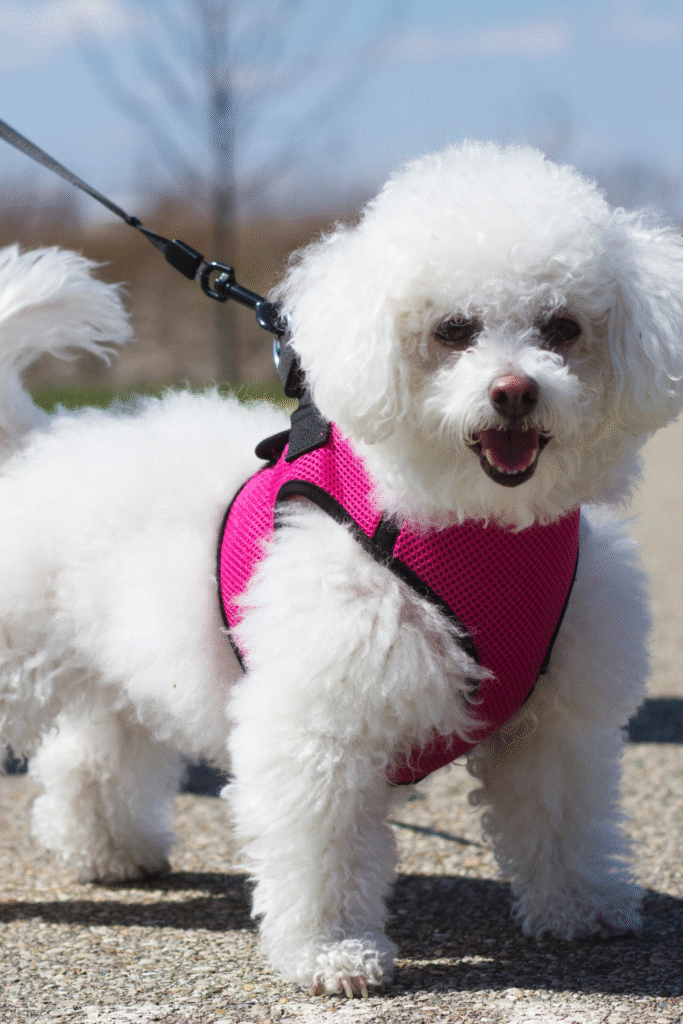
DIY Leash and Harness Enhancements for Better Walks
- Add Reflective Tape for Visibility
Attach reflective tape to your dog’s leash and harness. This ensures better visibility during early morning or late evening walks, keeping you and your pup safe from passing vehicles.
- Create a Comfortable Handle
Wrap the leash handle with soft padding or fabric for better grip and comfort, especially during long walks or if your dog tends to pull.
- Attach a Small Pouch for Essentials
Sew or clip on a small pouch to the leash to carry essentials like poop bags, treats, or keys. This keeps your hands free while walking.
- Adjust for Perfect Fit
Make small alterations to the harness, such as adding extra padding or adjusting the straps, to ensure your dog feels comfortable and secure during walks.
- Add a Carabiner for Quick Attachments
Incorporate a lightweight carabiner to the leash for securely attaching it to a belt loop, stroller, or outdoor fixtures when needed.
These simple DIY enhancements can make daily walks more enjoyable, safe, and convenient for both you and your furry friend!
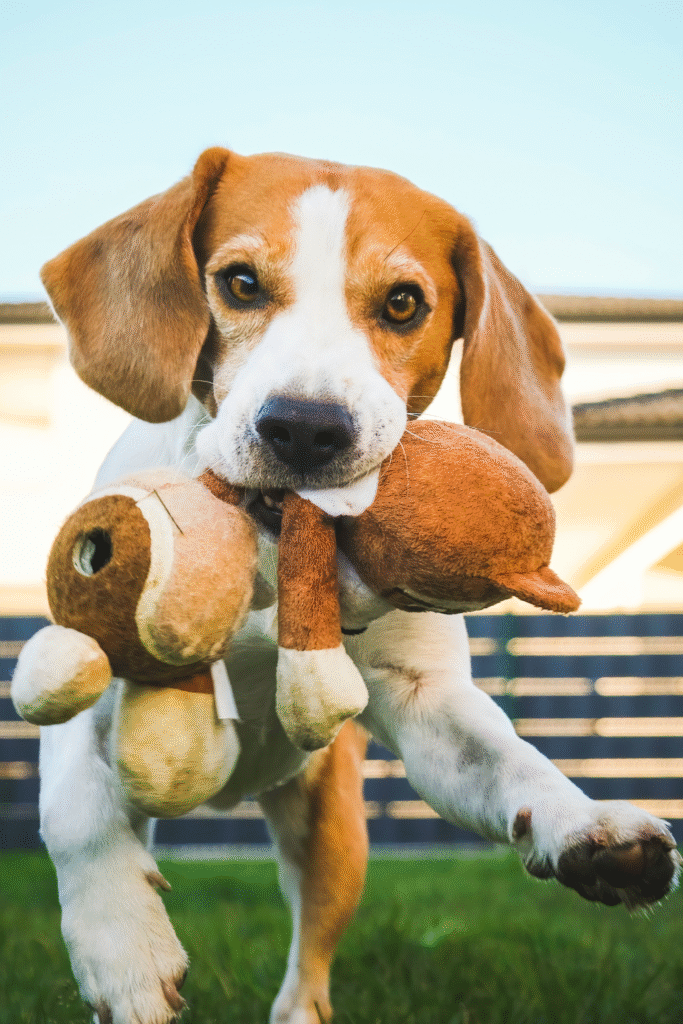
Interactive Toys to Keep Your Dog Engaged
- Treat-Dispensing Toys
Toys like treat balls or puzzles can keep your dog entertained for hours as they work to retrieve the hidden rewards. These toys provide mental stimulation while satisfying their natural foraging instincts.
- Squeaky Toys
A classic favorite, squeaky toys appeal to a dog’s hunting instincts. Opt for durable, high-quality options to ensure they stand up to prolonged chewing.
- Tug Toys
Tug-of-war ropes or similar toys are great for interactive play and also help strengthen your dog’s jaw muscles. Always supervise these sessions to keep playtime safe and fun.
- Chew Toys
Chew toys are excellent for teething puppies or dogs who love to chew. Look for long-lasting, non-toxic options to satisfy their chewing urges and promote healthy teeth.
- Interactive Ball Launchers
For energetic dogs, automatic ball launchers provide endless hours of play. These devices allow your pup to fetch and stay active even when you’re occupied.
- Snuffle Mats
These mats mimic the experience of sniffing for food in grass, providing enrichment and slowing down fast eaters. They’re particularly useful for mental exercise and stress reduction.
Incorporating these toys into your dog’s routine can help keep them stimulated, happy, and healthy!
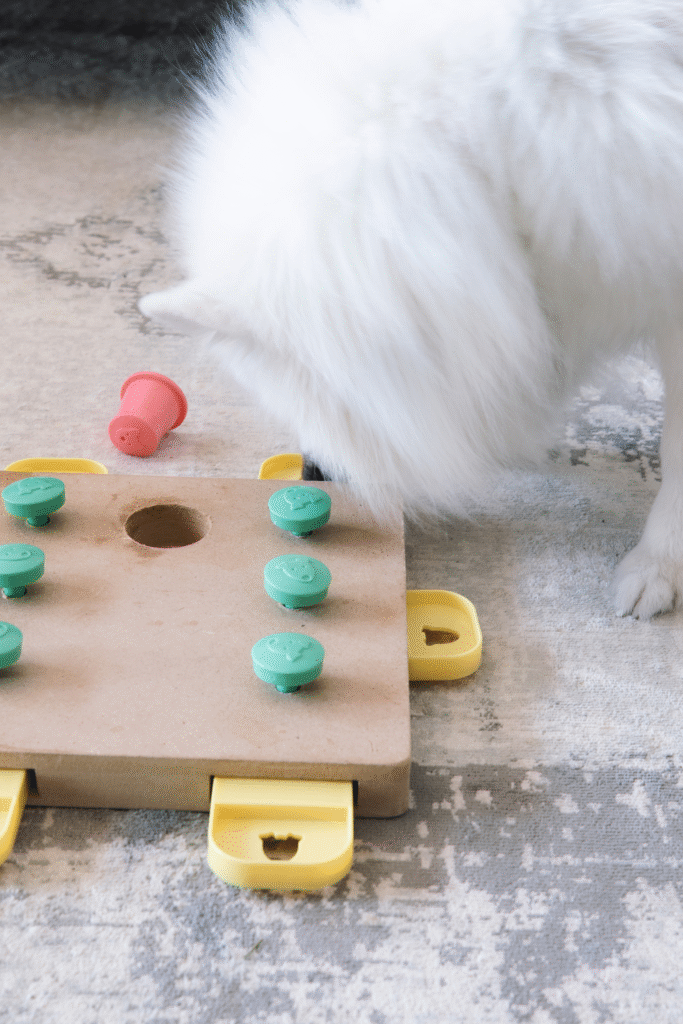
Calming Tools for Anxiety-Prone Dogs
For dogs that experience anxiety, certain tools and accessories can provide comfort and relaxation. Here are some effective calming tools:
- Weighted Blankets
Much like their human counterparts, dogs can benefit from the gentle pressure of a weighted blanket. This pressure can help to reduce stress levels and create a calming effect, making it a great option for dogs prone to nervousness during thunderstorms or fireworks.
- ThunderShirts
These snug-fitting vests provide consistent, gentle pressure on a dog’s torso, which mimics the sensation of being held. Many dogs find this comforting during stressful situations, such as travel or experiencing loud noises.
- Calming Chews
Specially designed treats often contain natural ingredients like chamomile, valerian root, or melatonin. These can help reduce anxiety and promote relaxation without the use of medication.
- Aromatherapy Diffusers
Using essential oils like lavender or chamomile in a dog-safe diffuser can create a calming environment for your pet. Be sure to use oils specifically made for dogs to avoid any adverse reactions.
- Interactive Puzzle Toys
Anxiety can often stem from boredom or a lack of stimulation. Engaging puzzle toys keep your dog’s brain active and can help relieve stress by diverting their attention to a rewarding activity.
By utilizing these calming tools, you can help create a soothing environment for your dog, improving their overall emotional well-being and making everyday experiences more enjoyable.
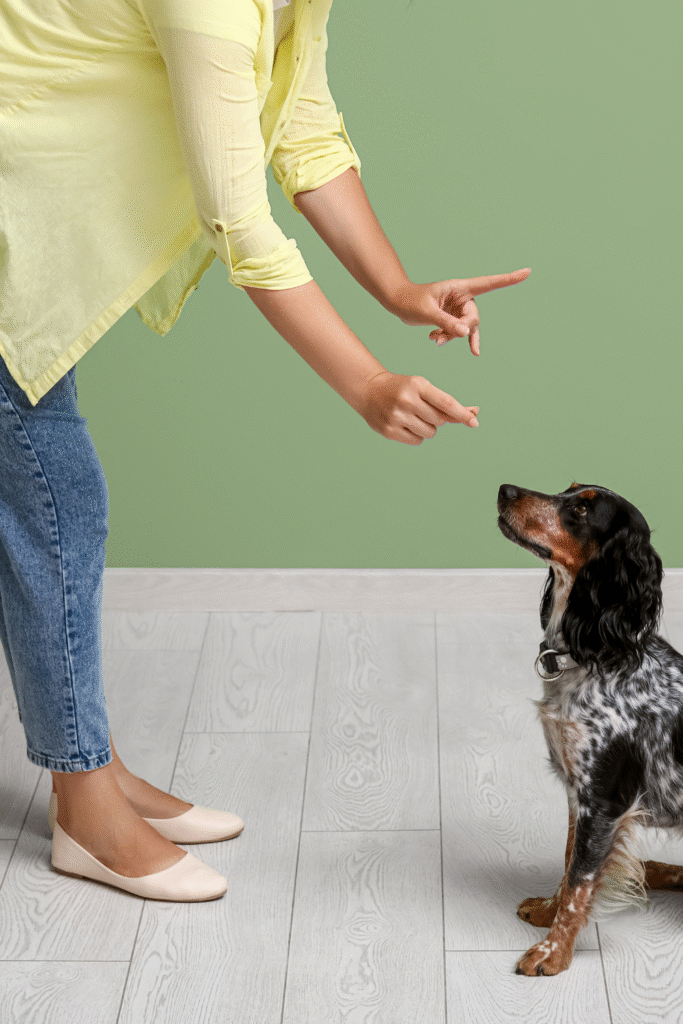
Tools for Correcting Unwanted Behavior
- Positive Reinforcement Training
Rewarding your dog for desirable behaviors is one of the most effective ways to correct unwanted actions. Use treats, toys, or verbal praise to encourage behaviors you want to see more often. This builds trust and strengthens the bond between you and your pet.
- Clicker Training
A clicker can serve as a simple but powerful tool in training. By associating the click sound with positive rewards, you can clearly mark the exact moment your dog performs the desired behavior, helping them understand what is expected.
- Consistency and Patience
Dogs thrive on routine and clear communication. Consistently responding to unwanted behaviors with clear guidance and appropriate corrections ensures your dog doesn’t receive mixed signals. Patience is key, as lasting behavioral changes take time.
- Interactive Training Toys
Use toys that encourage good behavior, such as chew toys, to redirect your dog’s attention from destructive habits like chewing on furniture. These toys can act as positive outlets for excess energy and reduce the frequency of negative behaviors.
- Professional Guidance
For persistent or severe behavioral issues, consult a professional dog trainer or behaviorist. These experts can identify the root causes of the behavior and provide tailored strategies to address them effectively.
With the right tools and approach, you can guide your dog toward better habits while fostering a positive and mutually respectful relationship.
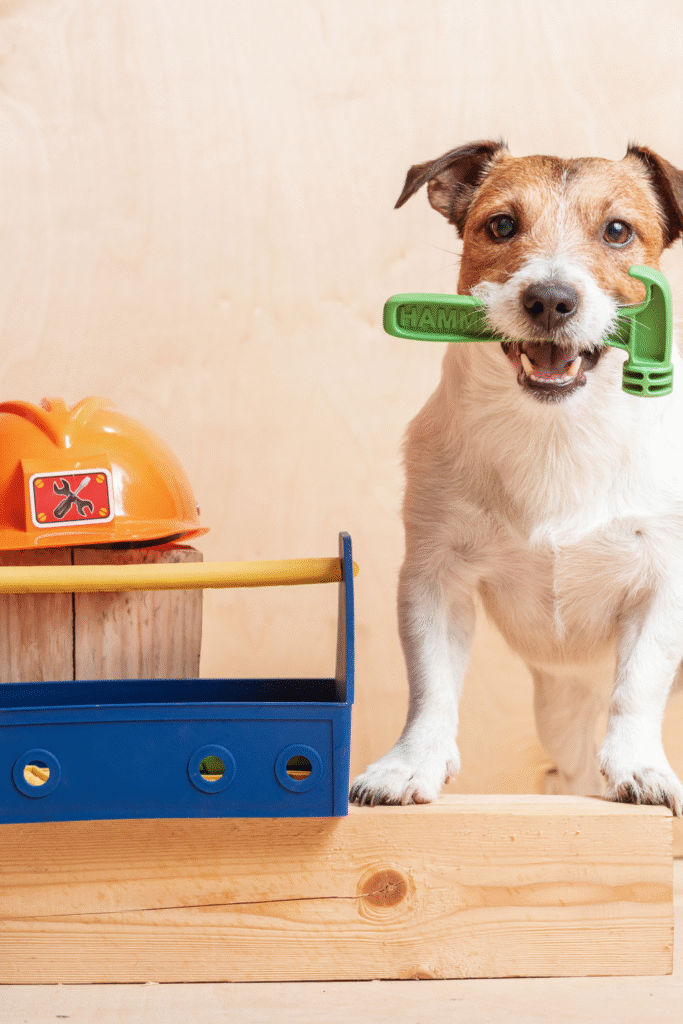
Maintenance and Cleaning of Your DIY Tools
Proper maintenance and cleaning of your DIY tools are essential to ensure their longevity and functionality. Follow these tips to keep your tools in excellent condition:
- Regular Cleaning
After each use, clean your tools thoroughly to remove dirt, dust, and debris. Use a dry cloth or a brush for general cleaning, and for sticky residues, use a damp cloth with mild soap.
- Lubrication
Metal parts, such as hinges, blades, and screws, should be lubricated regularly to prevent rusting and ensure smooth operation. Use a light machine oil or silicone spray for best results.
- Rust Prevention
Store tools in a dry place to avoid moisture buildup, which can cause rust. Consider adding silica gel packs to your toolbox or storage area for added protection against humidity.
- Sharpening Blades
Tools with blades, such as scissors or knives, should be sharpened periodically to maintain their efficiency. Use a sharpening stone or a specialized tool sharpener for this task.
- Inspect for Damage
Regularly inspect your tools for any signs of wear, cracks, or loosened parts. Address any issues immediately to prevent accidents and extend the life of the tool.
- Proper Storage
Store your tools in their designated spots to prevent damage and make them easier to find when needed. Use toolboxes, racks, or pegboards for organized storage.
- Follow Manufacturer Guidelines
Refer to the manufacturer’s instructions for the specific care of specialized tools. This ensures you are using and maintaining them as intended.
By implementing these maintenance practices, your DIY tools will remain reliable, safe, and effective for years to come.
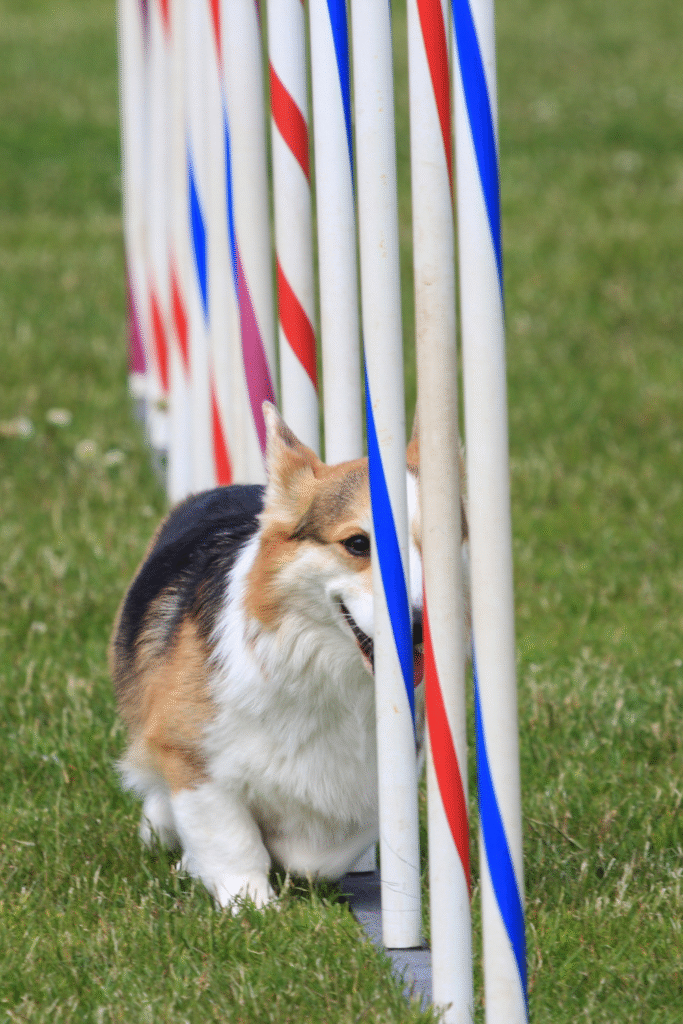
FAQ Section
1. Can I train my dog without store-bought tools?
Absolutely! DIY tools like clickers, agility courses, and treat dispensers work just as effectively and are often customized to fit your needs.
2. Are DIY tools safe for dogs?
Yes, as long as they’re made from pet-safe materials and checked regularly for wear and tear.
3. Which dogs benefit from DIY tools?
Every dog, regardless of breed or age, benefits from tools that complement consistent training methods.
4. How can I motivate my dog to engage with training?
Positive reinforcement, treats, and consistency are key. Engaging toys and interactive DIY tools can also captivate their interest.
5. Can these tools be reused?
Yes, most DIY tools are durable with proper maintenance. Clean them regularly to ensure safety.
6. What materials are safe to use for DIY dog training tools?
Natural, non-toxic materials such as untreated wood, cotton ropes, or BPA-free plastics are safe options. Always avoid materials that could splinter or cause harm.
7. Can DIY tools be used for puppies?
Yes, DIY tools can be adapted for puppies, but make sure they are appropriately sized and safe for their smaller size and developing teeth.
8. How often should I use DIY training tools with my dog?
It depends on your training goals, but incorporating them into daily training sessions can help maintain engagement and consistency.
9. Are there specific tools for dogs with special needs?
Yes, you can create tools tailored to your dog’s unique requirements, such as softer materials for older dogs or sensory tools for visually impaired pets.
10. How do I ensure my DIY tools remain effective over time?
Monitor wear and tear regularly, and replace or repair tools as needed. Keeping them clean and introducing variety will also maintain your dog’s interest.
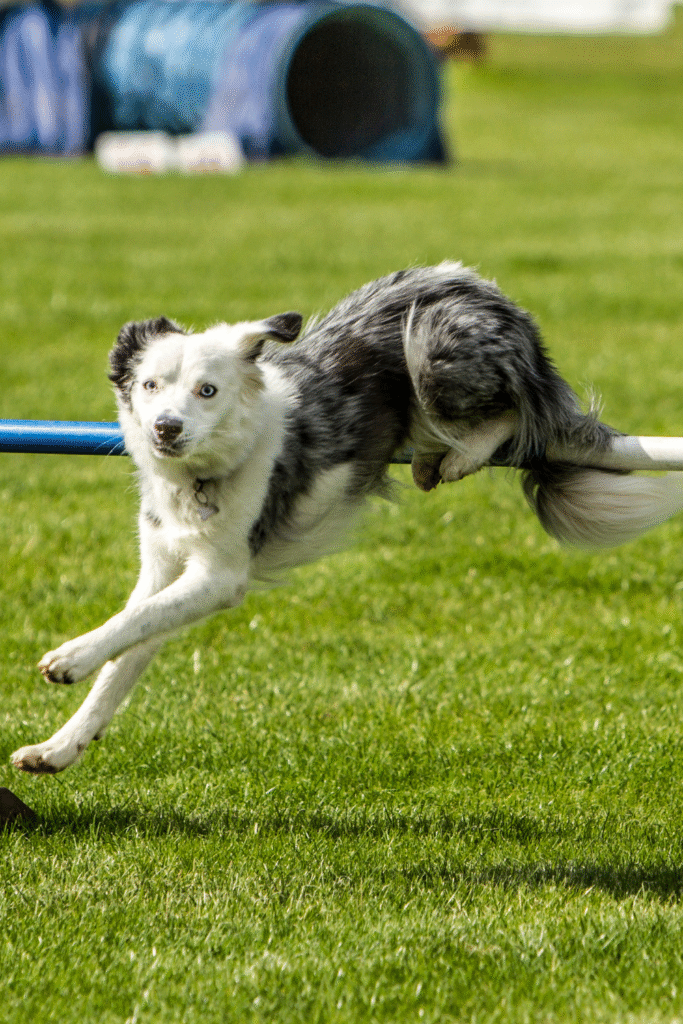
Final Thoughts
DIY dog training tools are your secret weapon for teaching better behavior without unnecessary expenses. From clickers to treat dispensers, these simple solutions ensure an engaging and effective experience for you and your furry companion. Start creating yours today—you’ll be amazed at the results!
